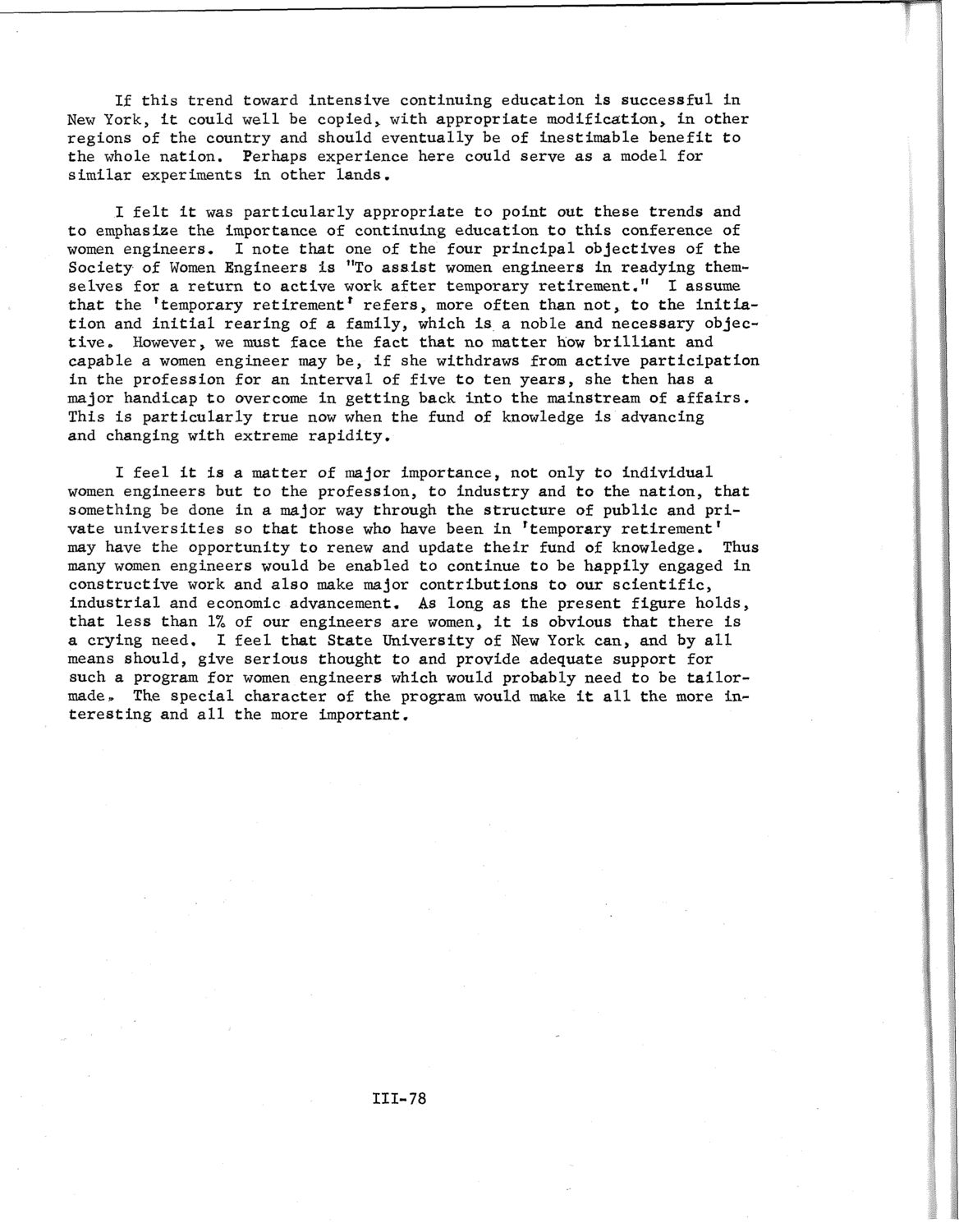| |
| |
Caption: SWE - Proceedings of the First International Conference of Women Engineers and Scientists
This is a reduced-resolution page image for fast online browsing.

EXTRACTED TEXT FROM PAGE:
If this trend toward intensive continuing education is successful in New York, it could well be copied,, with appropriate modification, in other regions of the country and should eventually be of inestimable benefit to the whole nation. Ferhaps experience here could serve as a model for similar experiments in other lands. I felt it was particularly appropriate to point out these trends and to emphasize the importance of continuing education to this conference of women engineers. I note that one of the four principal objectives of the Society of Women Engineers is "To assist women engineers in readying themselves for a return to active work after temporary retirement." I assume that the rtemporary retirement* refers, more often than not, to the initiation and initial rearing of a family, which is a noble and necessary objective. However, we must face the fact that no matter how brilliant and capable a women engineer may be, if she withdraws from active participation in the profession for an interval of five to ten years, she then has a major handicap to overcome in getting back into the mainstream of affairs. This is particularly true now when the fund of knowledge is advancing and changing with extreme rapidity. I feel it is a matter of major importance, not only to individual women engineers but to the profession, to industry and to the nation, that something be done in a major way through the structure of public and private universities so that those who have been in temporary retirement' may have the opportunity to renew and update their fund of knowledge. Thus many women engineers would be enabled to continue to be happily engaged in constructive work and also make major contributions to our scientific, industrial and economic advancement. As long as the present figure holds, that less than 1% of our engineers are women, it is obvious that there is a crying need, I feel that State University of New York can, and by all means should, give serious thought to and provide adequate support for such a program for women engineers which would probably need to be tailormade. The special character of the program would make it all the more interesting and all the more important. Ill-78
| |